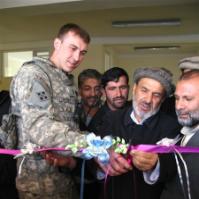The recent clashes in eastern Afghanistan thrust the "forgotten war" back into the public eye. At a time when admittedly fragile stability is taking hold in Iraq, it is also an important reminder that the need for improved counterinsurgency capabilities neither began nor will end there. The international effort to stabilize Afghanistan is in peril, and the United States and its NATO allies lack many of the resources required to effectively secure and reconstruct that war-torn country. Against this backdrop, Secretary of State Condoleezza Rice's inauguration of the Civilian Response Corps is a very welcome development. The demands of large-scale counterinsurgency and reconstruction in Afghanistan and Iraq are increasingly clear: The United States must integrate civilian reconstruction expertise with military force in conflict zones. Ad hoc measures, like the establishment of the civil-military Provincial Reconstruction Teams in Afghanistan and Iraq, were an important step towards creating this capability but are an incomplete solution. Recent State Department-led initiatives, which include the establishment of the Civilian Response Corps as well as the Office of the Coordinator for Reconstruction and Stabilization (CRS) and the Interagency Counterinsurgency Initiative, represent an effort to establish effective civilian control of the political, economic, and social dimensions of nation-building operations. The military have taken major strides in adapting to counterinsurgency, offering lessons for the State Department and interagency community. The military assesses its capacity based on a framework known as "DOTMLPF": Doctrine, Organization, Training, Materiel, Leadership, Personnel, and Facilities. CRS and the Civilian Response Corps are key organizational frameworks for building the interagency's capacity, but they must be supported and empowered by inputs to the D, T, M, L, P, and F of DOTMLPF. A few critical next steps bear mentioning.
Institutionalizing Adaptation: U.S. Counterinsurgency Capabilities Must Improve

